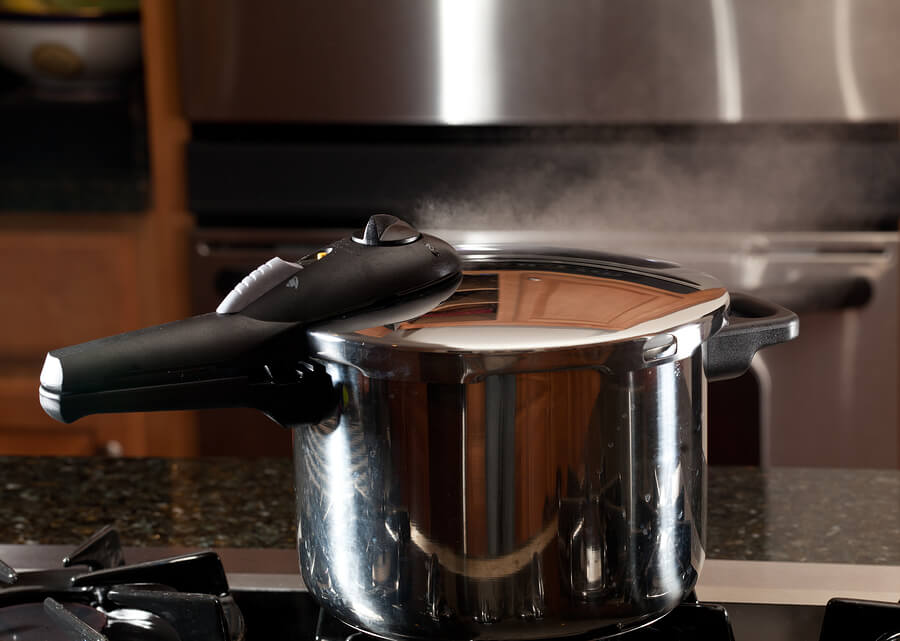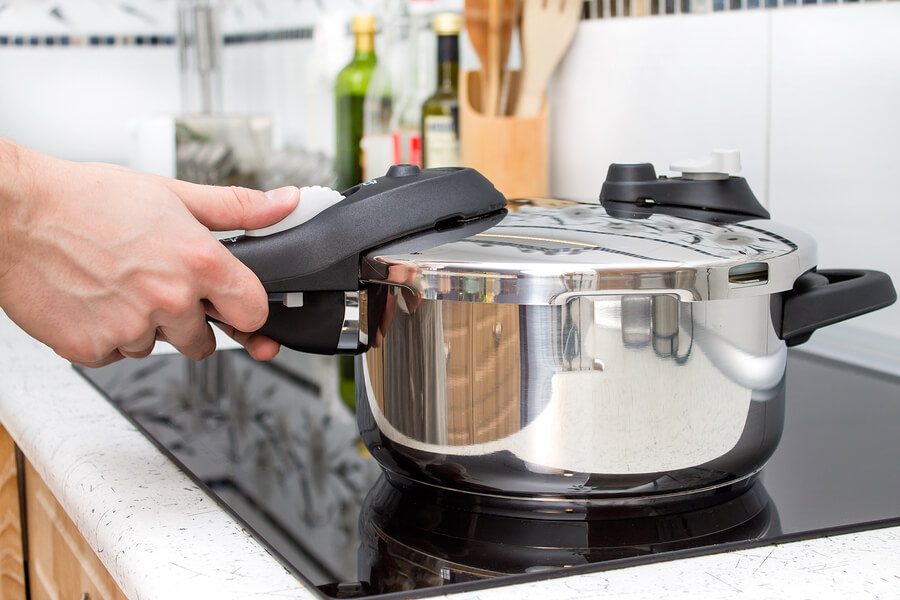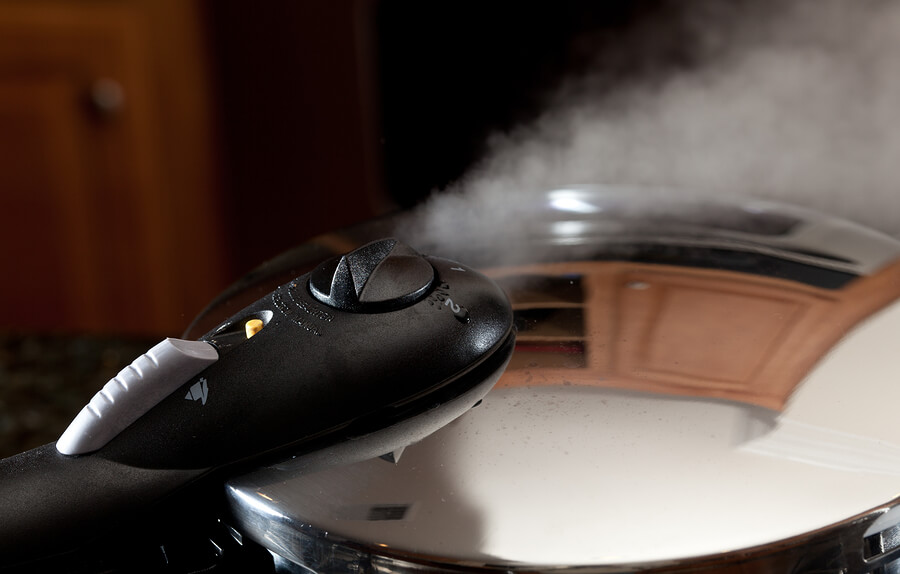Why is it that my pressure cooker keeps leaking?

While pressure cookers have become a typical household device in kitchens due to their ability to save both times and work on the cook’s part, they are not without drawbacks. Despite increased technology and complex mechanisms, pressure cookers do have issues that affect the quality of the food you receive and the cooking time required to prepare the dish. Pressure cookers can sustain damage from usage, necessitate part replacements, and are prone to gasket seal difficulties. Unfortunately, consulting the owner’s handbook does not always give you the solution you need, so we will. What is causing my pressure cooker to leak? The most probable cause is an issue with your lid’s rim, the gasket that seals it shut, or food particles accumulating during the pressure buildup. Let’s look at why these problems cause leakage and how you can keep your pressure cooker from leaking in the future.
Why Is Your Pressure Cooker Leaking?

There are various reasons why your pressure cooker may be leaking; we’ll go over the most prevalent ones below.
- You have a faulty gasket that prevents your pressure cooker from producing enough pressure. This can cause your pressure cooker to leak vapor from the edges of the lid, cause vapor to leak from the pressure valves, or prevent it from producing pressure.
- Your gasket is wrongly placed. Gaskets are frequently supplied inside out, with the notched side facing up. This notched side should be put on the outside of the lid since it will match the lip. If you put it on the inside, you will have leaks.
- You have a faulty gasket. Leaking might occur if your gasket has divets or injection molding artifacts.
- Your pressure cooker is leaking too much steam. If you see steam leaking from your pressure cooker, it is not only unable to reach the necessary pressure, but it is also a sign of a filthy or cracked gasket.
- Your vent pipes are leaking vapors. Although vapors usually are discharged from your pressure cooker’s valve, you may have a debris buildup if you observe food particles in the vent pipe or excessive amounts of vapors.
- Your pressure cooker’s rim is seeping with vapors or water. This happens when you use a pressure cooker with a controlled weight mechanism. The vapors will cease seeping out when your pressure cooker reaches the correct pressure volume. Inspect and clean the vent pipe if the problem persists after your pressure cooker reaches maximum pressure.
- Your pressure cooker’s lid is twisted. This can be caused by overheating, age, or dropping the lid. If you have an aluminum pressure cooker, the lid might get twisted, escaping steam.
- If the rim of your unit is damaged, it may not be able to seal properly. Your pressure cooker will leak as a result of this. The only way to fix this is to acquire new components or a new pressure cooker.
- The latch metal has been distorted. There will be a metal hook piece on the front underside of the handle of your pressure cooker lid. If the metal for this latch becomes twisted out of shape, it will be unable to put sufficient downward pressure on the lid, allowing the pressure cooker to leak.
- The float valve is constantly leaking. If your float valve is leaking, it is most likely due to food material on the silicone seal or a damaged seal.
How To Stop a Pressure Cooker From Leaking?
This depends on where the pressure cooker is leaking and what appears to be the problem. Here are some tried-and-true methods for keeping your pressure cooker from leaking.
Gasket: If you find a damaged/defective gasket, replace it. If your gasket is just dirty and clogged with food particles, take it out of the pressure cooker and clean it out. If you reinstall it correctly, the problem should go away.
Leaks from Vent Pipes: The first thing you should do is inspect the vent pipes for food particles. If they do, get rid of them! If there are no food particles, ensure your pressure cooker is appropriately weighted while in operation.
Latch Handle: If your latch handle becomes bent out of shape, you will need to replace it. Check it twice to ensure that it is adequately sealed. If it is not twisted out of shape, it is possible that it is not in the sealing position.
Steam is leaking from the sides:
- Make sure you have a sealing ring/gasket.
- Check that the gasket is not strained, broken, or contaminated with food particles.
- Replace the gasket, clean it, or store it in the freezer for a few minutes to shrink it.
Warped Lid/Damaged Rim: You may either replace the warped lid and damaged pieces or buy a new pressure cooker.
How Do You Keep a Pressure Cooker Gasket Clean to Keep It From Leaking?
The gasket (sealing ring) of your pressure cooker will be composed of rubber, silicone, or a mix of the two. You should perform the following to keep it from breaking down, leaking, or being damaged.
- Thoroughly clean it. Remove the gasket from your pressure cooker’s lid after each use and wash it with soapy water. The dishwasher should not be used to clean the gasket. When you wash the gasket, look for signs of wear and tear or damage - fractures are frequently the first thing you notice. Cleaning it will keep food particles from accumulating and guarantee that it seals correctly when in use. Please allow it to dry before reinstalling it thoroughly.
- How to Extend Its Life. After you’ve finished cooking your food, wipe off the rim with a clean, moist towel. Before unlocking the lid, use this method to clean around the rim. When you push the lid up when food particles adhere to the rim, the gasket may rip.
- When cooking, you should always use a suitable amount of water. Don’t let your pressure cooker run out of water. Internal heat will deteriorate the gasket.
- Your gasket may become brittle or dry as it ages. Before usage, soak it in boiling water for 5 to 15 minutes. Keep in mind that this is only a temporary fix and that you will ultimately need to replace the gasket.
- How to Store It Correctly: It’s acceptable to keep the gasket within the lid; don’t store the pressure cooker with the lid locked, as this might crush the gasket. If you have a spare gasket, keep it in a plastic bag and use baking soda to avoid moisture buildup if your area is damp.
Do you apply oil to your gaskets?
No. Because oil has a higher boiling point, it might grow boiling on the gasket, reducing its life expectancy. On the other hand, cooking oils can get sticky and cause the gasket to attach to the metal, causing it to rip when you open the lid. Oil can also attract dirt and food particles, coat and wear down the gasket. Newer types of pressure cookers will have silicone gaskets, eliminating oil requirements.
Why Does My Pressure Cooker Leak from the Handle?

Although you may believe that your pressure cooker is leaking from the handle, this is not always the case, depending on the sort of pressure cooker you have. Some pressure cookers have the primary steam pressure valve in the handle, and it will release steam to control pressure; check your model to see whether it works this way. If it occurs, it isn’t a cause for concern because you should detect condensation or mild vapors as a result. When the necessary pressure is obtained, this should come to a complete halt. If this isn’t the case, you may have a pressure control problem. If your pressure cooker does not operate this way, make the following adjustments:
- The screws that hold the handle together may be too loose. Tighten them up and see whether the problem goes away.
- When you close the lid of your pressure cooker, your handle may not be closing or locking, resulting in water leaks. Ensure the handle isn’t deformed, damaged, or bent out of shape.
- Check again to ensure that the water is indeed leaking from the handle. Water leaking from the pressure cooker’s rim or lid might sometimes fall down and around to the handle, leading you to believe that the leak is coming from the handle.
- Check that your handle is not in the venting position and is correctly positioned.











